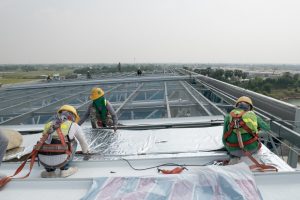Coworking space operators should consider investing in better commercial interior design in Singapore, where demand for flexible workspaces has increased because of rising rental rates for traditional offices.
In fact, shared office spaces now account for a large share of prime properties in the country because of the growing demand.
Coworking: an Established Office Segment
A recent study showed that 45 percent of net office absorption for Grade A properties in the central business district originated from coworking office operators. Another report expects commercial real estate investments in the Asia-Pacific region to increase by 5 percent in 2019, and building more shared offices is one of the investment trends.
Flexible offices used to be just an alternative for commercial tenants, but this has changed ever since the market overtook the industry as the most significant occupier of prime offices in Singapore. Even coworking space operators in the U.S. have acknowledged the potential of the country’s office market for flexible workspaces, as evidenced by their launch of properties in the CBD area. This will improve the level of competition among local and foreign players, hence providing clients with more options in terms of quality and price.
Key Trends in Commercial Offices
 Most companies particularly startup businesses have turned to coworking offices to save money, but even established firms have decided to patronize flexible offices to attract younger workers. Those who plan to build more of these properties should consider the impact of design on their target market’s preferences since coworking spaces are generally supposed to be more affordable than traditional offices.
Most companies particularly startup businesses have turned to coworking offices to save money, but even established firms have decided to patronize flexible offices to attract younger workers. Those who plan to build more of these properties should consider the impact of design on their target market’s preferences since coworking spaces are generally supposed to be more affordable than traditional offices.
As an example, property landlords will remodel their portfolios to include more flexible workspaces. In the next 10 years or so, these will represent around 30 percent of their commercial portfolios worldwide. The trend is just more noticeable in Singapore because of the low supply of available properties, which serves as another reason why rents have been increasing in recent months.
How Much Do Companies Really Save?
As of 2018, the average price of renting an office for 10 employees cost almost $12,000 in Singapore’s CBD area. In a coworking office, the same number of people cost around $7,200. Prices might have changed today, but it seems evident that flexible offices are a better option for a company’s budget.
If you rent a traditional office, there is the need to spend on maintenance and utility expenses. On the contrary, spending on membership for a coworking office eliminates this added cost for your convenience. Some coworking space operators also allow short-term leases for companies that are unsure if they need to invest in a traditional office, yet wish to avoid paying high monthly rents at the same time.
Property landlords and investors should consult a commercial interior design firm to know the best way to remodel or create functional workspaces. While traditional offices will remain a crucial part of commercial properties, it’s safe to assume that coworking spaces will continue to be popular as long as rental rates keep on climbing up.






